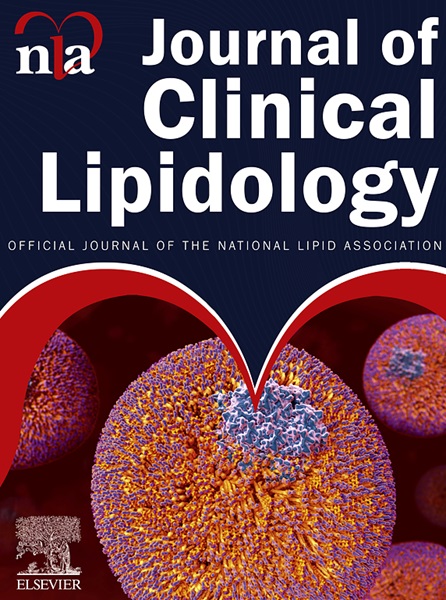Validation of physical examinations of tendon xanthomas and changes in the cutoff values of Achilles tendon thickness on radiography in the clinical criteria of heterozygous familial hypercholesterolemia in Japan
IF 3.6
3区 医学
Q2 PHARMACOLOGY & PHARMACY
引用次数: 0
Abstract
BACKGROUND
The 2022 Japan Atherosclerosis Society familial hypercholesterolemia (FH) clinical criteria were modified. In particular, the cutoff value of Achilles tendon thickness (ATT) on radiography was changed from ≥9 mm in both sexes to ≥8.0 mm in men and ≥7.5 mm in women.
METHODS
A total of 872 patients with FH were retrospectively reviewed. Patients were categorized by an ATT of <7.5/8.0 mm (group 1), ≥7.5/8.0 and <9.0 mm (group 2, new group with FH by ATT), and ≥9 mm (group 3).
RESULTS
In total, 492 patients fell into group 1, 102 in group 2, and 263 in group 3, and 14.0%, 55.9%, and 79.8% of patients in groups 1, 2, and 3, respectively, were positive for a FH mutation. Further, among patients with low-density lipoprotein cholesterol >180 mg/dL, 37.3%, 77.3%, and 86.5% of patients had a FH mutation in groups 1, 2, and 3, respectively. The proportion of patients with protein-truncating mutation (3.8%, 16.7%, and 53.2%, respectively) differed significantly across groups 1 through 3, respectively. Interestingly, only a very small proportion of the patients in groups 2 and 3 had palpable xanthomas (3.0% and 14.4% respectively).
CONCLUSIONS
This study validates the new radiographic ATT criteria, since the vast majority of patients in the intermediate ATT category had true FH, as shown by positive genetic testing, whereas the old ATT criteria left them with just a deferred diagnosis of FH. In addition, use of physical examination alone for the presence of tendon xanthoma may lead to underdiagnosis of FH.
日本杂合子家族性高胆固醇血症临床标准中肌腱黄瘤体格检查的验证和跟腱厚度放射摄影截断值的变化
对 2022 年日本动脉粥样硬化学会家族性高胆固醇血症(FH)临床标准进行了修改。特别是,跟腱厚度(ATT)在X光片上的临界值从男女均≥9毫米改为男性≥8.0毫米,女性≥7.5毫米。共对872名FH患者进行了回顾性研究。患者按ATT为180 mg/dL进行分类,37.3%、77.3%和86.5%的患者有FH突变,分别属于1、2和3组。蛋白截断突变患者的比例(分别为 3.8%、16.7% 和 53.2%)在第 1 组至第 3 组之间分别存在显著差异。有趣的是,在第 2 组和第 3 组的患者中,只有极少数人有可触及的黄瘤(分别为 3.0% 和 14.4%)。这项研究验证了新的放射学 ATT 标准,因为绝大多数属于中间 ATT 类别的患者都有真正的 FH,如基因检测呈阳性所示,而旧的 ATT 标准只能让他们被推迟诊断为 FH。此外,仅靠体格检查来判断是否存在腱索黄疽可能会导致对 FH 的诊断不足。
本文章由计算机程序翻译,如有差异,请以英文原文为准。
求助全文
约1分钟内获得全文
求助全文
来源期刊
CiteScore
7.00
自引率
6.80%
发文量
209
审稿时长
49 days
期刊介绍:
Because the scope of clinical lipidology is broad, the topics addressed by the Journal are equally diverse. Typical articles explore lipidology as it is practiced in the treatment setting, recent developments in pharmacological research, reports of treatment and trials, case studies, the impact of lifestyle modification, and similar academic material of interest to the practitioner.
Sections of Journal of clinical lipidology will address pioneering studies and the clinicians who conduct them, case studies, ethical standards and conduct, professional guidance such as ATP and NCEP, editorial commentary, letters from readers, National Lipid Association (NLA) news and upcoming event information, as well as abstracts from the NLA annual scientific sessions and the scientific forums held by its chapters, when appropriate.

 求助内容:
求助内容: 应助结果提醒方式:
应助结果提醒方式:


